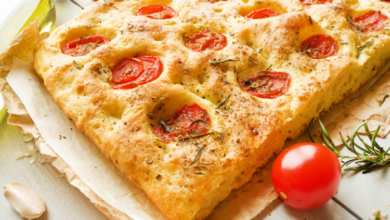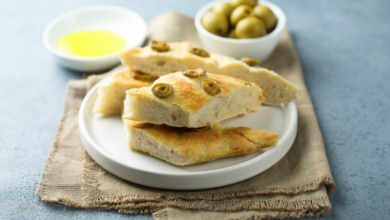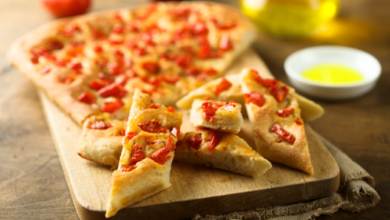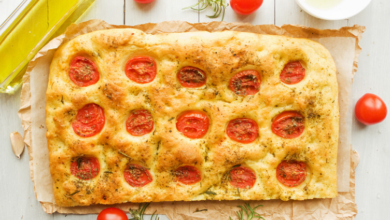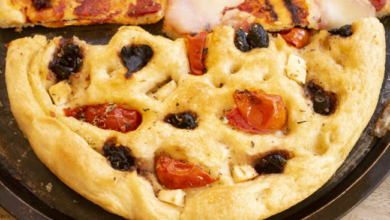Is focaccia dense? Here’s answer!
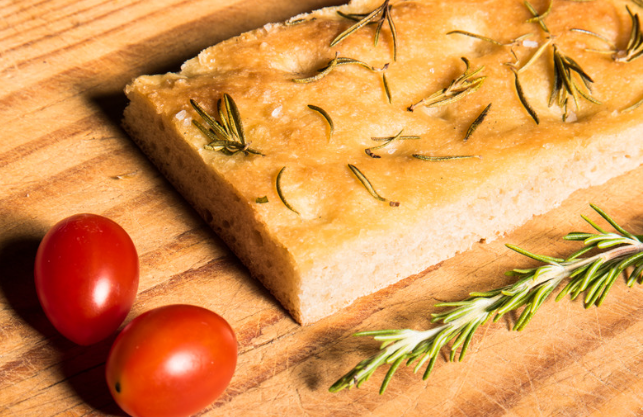
What To Know
- A higher yeast concentration or longer fermentation time will produce a more open crumb, while a lower yeast concentration or shorter fermentation time will result in a denser crumb.
- A higher baking temperature and shorter baking time will produce a crispy crust and a denser crumb, while a lower baking temperature and longer baking time will result in a softer crust and a more open crumb.
- A heavy cast-iron pan will create a denser focaccia with a crispier crust, while a lighter aluminum pan will produce a lighter focaccia with a softer crust.
Focaccia, an iconic Italian flatbread, has captivated taste buds worldwide with its crispy crust and airy interior. However, one question that often arises is: is focaccia dense? This culinary conundrum has sparked debates among bakers and bread enthusiasts alike. In this comprehensive blog post, we delve into the factors that determine focaccia‘s density, exploring the techniques and ingredients that shape its texture and crumb.
Defining Density in Focaccia
Before we delve into the factors that influence focaccia‘s density, it’s essential to define what we mean by density. In the context of bread, density refers to the amount of air space present within the crumb. A dense bread has a tight crumb with few air pockets, while a light and airy bread has a more open crumb with larger air spaces.
Factors Affecting Focaccia’s Density
Several factors contribute to the density of focaccia, including:
1. Hydration
Hydration, or the ratio of water to flour, is a crucial factor in determining focaccia’s density. A higher hydration level produces a softer, more open crumb, while a lower hydration level results in a denser, tighter crumb. Typically, focaccia doughs have a hydration level of around 70-80%.
2. Yeast Activity
Yeast is responsible for creating the air pockets in bread. The amount and activity of yeast used in the dough will impact the density of the focaccia. A higher yeast concentration or longer fermentation time will produce a more open crumb, while a lower yeast concentration or shorter fermentation time will result in a denser crumb.
3. Kneading
Kneading develops the gluten in the flour, which gives bread its structure. Excessive kneading can result in a tough, dense crumb, while under-kneading can lead to a crumb that is too loose and open. For focaccia, a moderate amount of kneading is typically sufficient.
4. Baking Temperature and Time
The temperature and duration of baking also play a role in focaccia’s density. A higher baking temperature and shorter baking time will produce a crispy crust and a denser crumb, while a lower baking temperature and longer baking time will result in a softer crust and a more open crumb.
5. Toppings
The type and amount of toppings used on focaccia can also influence its density. Heavy toppings, such as vegetables or meats, can weigh down the focaccia and make it denser. Conversely, lighter toppings, such as herbs or cheeses, will have less of an impact on the density.
6. Dough Stretching
Stretching the focaccia dough before baking helps create a thin, even crust and an open crumb. The more the dough is stretched, the thinner the crust and the more open the crumb will become.
7. Pan Type
The type of pan used to bake the focaccia can also affect its density. A heavy cast-iron pan will create a denser focaccia with a crispier crust, while a lighter aluminum pan will produce a lighter focaccia with a softer crust.
Conclusion: Understanding Focaccia‘s Density
The density of focaccia is a complex interplay of several factors, including hydration, yeast activity, kneading, baking temperature and time, toppings, dough stretching, and pan type. By carefully adjusting these variables, bakers can create focaccia with a wide range of textures and crumb structures, from dense and chewy to light and airy.
FAQ
1. Why is my focaccia dense?
Possible reasons include:
- Low hydration level
- Insufficient yeast activity
- Excessive kneading
- High baking temperature and short baking time
- Heavy toppings
2. How can I make my focaccia less dense?
- Increase hydration level
- Use more yeast or allow for longer fermentation
- Knead the dough less
- Bake at a lower temperature for longer
- Use lighter toppings
3. What is the ideal density for focaccia?
The ideal density of focaccia is a matter of personal preference. Some prefer a denser focaccia with a chewy crumb, while others prefer a lighter focaccia with a more open crumb. Experiment with different variables to find the density that you enjoy most.
